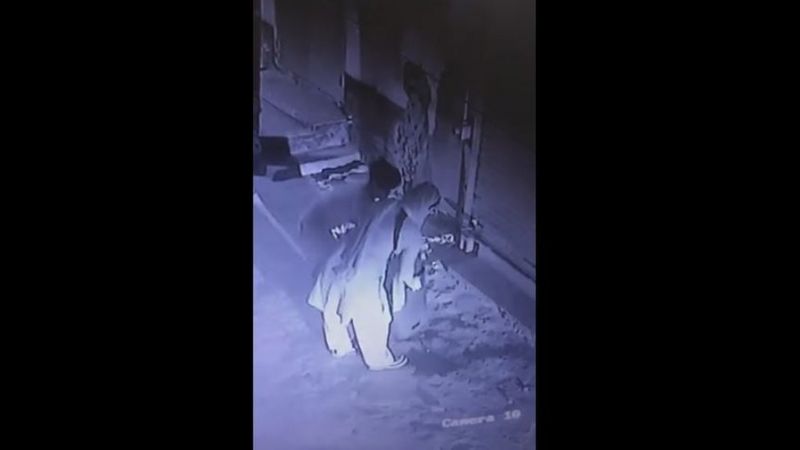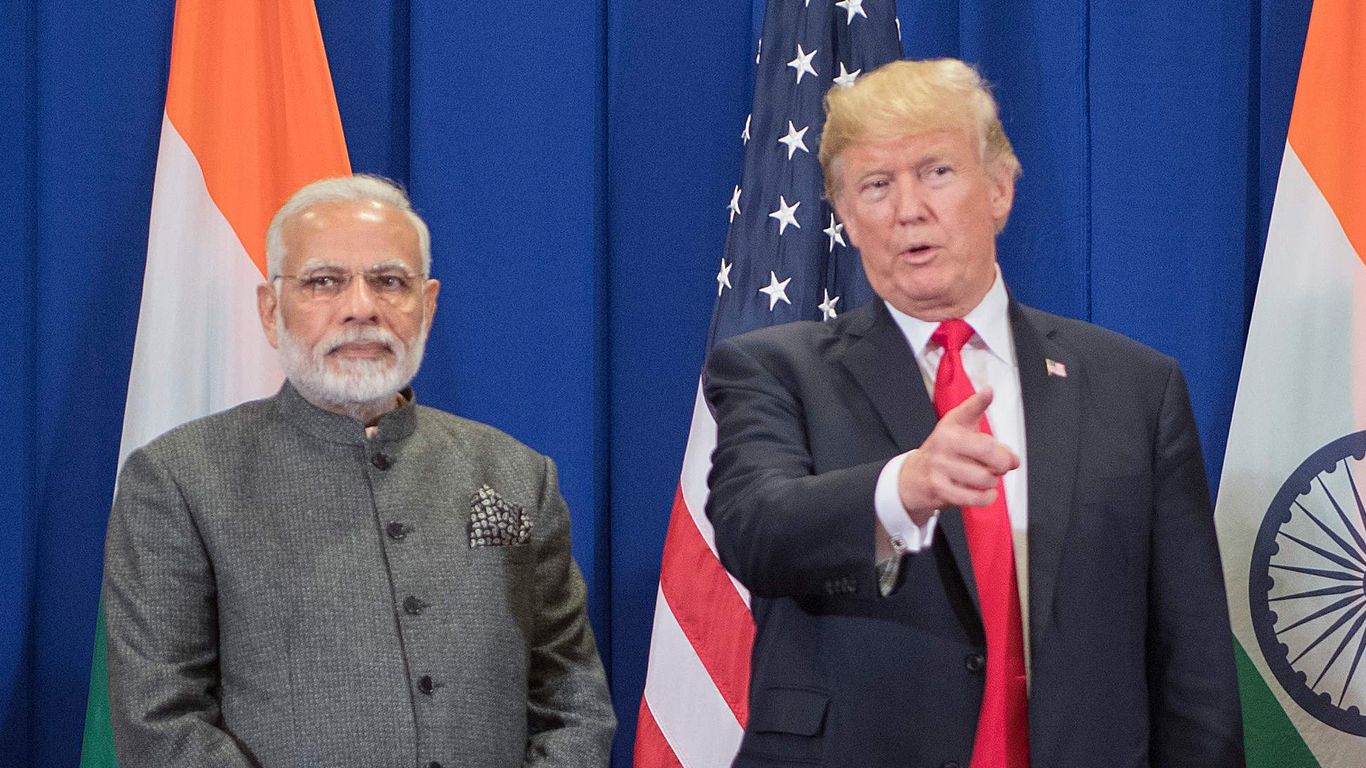Osama Bin Laden: Charting The Fall Of Al-Qaeda's Leader – A Manhunt Retrospective

Table of Contents
The Rise of Osama bin Laden and al-Qaeda
Early Life and Formation of al-Qaeda
Osama bin Laden's early life, marked by wealth and religious conservatism, laid the groundwork for his future trajectory. His involvement in the Soviet-Afghan War, where he fought alongside Mujahideen against the Soviet Union, proved pivotal. This experience allowed him to network extensively with other Islamic fighters and develop his vision for a global jihad.
- Key events in Afghanistan: Bin Laden's participation in the anti-Soviet resistance provided valuable combat experience and solidified his anti-Western sentiment. He used this experience to build his network and influence.
- The evolution of al-Qaeda's ideology: Initially focused on expelling Soviet forces from Afghanistan, al-Qaeda's ideology gradually expanded to encompass a global struggle against the West, fueled by his interpretation of Islamic law and a deep-seated resentment of Western influence in the Muslim world.
- Recruitment strategies: Bin Laden effectively used religious rhetoric, grievances against Western policies, and the promise of martyrdom to recruit followers from across the globe. Al-Qaeda's sophisticated propaganda machine played a vital role in attracting new recruits.
Keywords: Al-Qaeda, Afghanistan, Soviet-Afghan War, Jihadism, Terrorism, Osama bin Laden ideology
Al-Qaeda's Global Expansion and 9/11 Attacks
Following the Soviet withdrawal from Afghanistan, al-Qaeda expanded its operations globally, establishing training camps and launching attacks against Western targets. The 1998 bombings of US embassies in Kenya and Tanzania marked a significant escalation. However, it was the September 11, 2001, attacks on the World Trade Center and the Pentagon that propelled Osama bin Laden and al-Qaeda into the global spotlight.
- Key attacks: The 9/11 attacks were a watershed moment, transforming the global perception of al-Qaeda and fundamentally shifting the focus of US foreign policy. Other significant attacks included the USS Cole bombing in 2000.
- Global reach: Al-Qaeda's network extended across numerous countries, facilitating planning and execution of attacks globally. The organization's decentralized structure proved resilient to counter-terrorism efforts.
- Changing tactics: Al-Qaeda's tactics involved both large-scale attacks and smaller, localized operations, aiming to sow chaos and inspire further acts of terrorism. The group utilized various methods, including bombings, assassinations, and kidnappings.
- Alliances with other terrorist groups: Al-Qaeda forged alliances and influenced other terrorist groups, creating a broader network of extremism.
Keywords: 9/11, World Trade Center, Pentagon, terrorist attacks, global terrorism, Osama bin Laden network
The Manhunt: Strategies and Challenges
Initial Stages of the Manhunt
The initial years of the manhunt for Osama bin Laden were hampered by a lack of precise intelligence and the vastness of the terrain involved. He was believed to be moving between Afghanistan and Pakistan, utilizing a complex network of safe houses and supporters.
- Early leads: Early intelligence often proved unreliable or outdated, hindering effective counter-terrorism operations. The challenge of identifying accurate intelligence among misinformation proved significant.
- Challenges posed by intelligence gaps: The decentralized nature of al-Qaeda and the lack of deep penetration within the organization made it difficult to obtain accurate information about Bin Laden's whereabouts.
- Cross-border operations: The need for cross-border cooperation, particularly with Pakistan, proved challenging due to political sensitivities and the limitations of intelligence sharing agreements.
- International cooperation: While international cooperation was crucial, differences in priorities and strategies amongst various intelligence agencies sometimes hampered the overall effectiveness of the manhunt.
Keywords: CIA, FBI, intelligence gathering, counter-terrorism, Pakistan, Osama bin Laden location
The Role of Intelligence and Technology
Over time, the manhunt incorporated advanced surveillance technologies and enhanced intelligence gathering techniques. This evolution proved critical in finally locating Osama bin Laden.
- SIGINT, HUMINT: The integration of signals intelligence (SIGINT) and human intelligence (HUMINT) significantly enhanced the accuracy and reliability of the information gathered.
- Technological advancements: Drone technology, satellite imagery, and advanced communication interception played crucial roles in tracking Bin Laden's movements and activities.
- Challenges in verifying intelligence: Discerning credible intelligence from misinformation and deception remained a significant challenge throughout the manhunt. The need to confirm information through multiple sources was paramount.
Keywords: Surveillance, drone technology, intelligence analysis, counterintelligence, misinformation, Osama bin Laden tracking
The Abbottabad Raid and its Aftermath
The Final Assault
The culmination of the decade-long manhunt was the May 2, 2011, raid on a compound in Abbottabad, Pakistan, by US Navy SEALs. This operation, meticulously planned and executed by SEAL Team Six, resulted in the death of Osama bin Laden.
- SEAL Team Six: The elite counter-terrorism unit played a pivotal role in the successful execution of the raid. Their specialized training and skills were essential for navigating the complex challenges of the operation.
- Planning the raid: The raid involved extensive planning, meticulous intelligence gathering, and detailed simulations to ensure the success of the mission.
- Challenges posed by the location: The Abbottabad compound's location, within a relatively affluent area of Pakistan, posed logistical and operational challenges.
- Securing the compound: The successful neutralization of Bin Laden and the swift extraction of the SEAL team were critical to minimizing potential risks and complications.
Keywords: Abbottabad, SEAL Team Six, raid, Pakistan, Navy SEALs, Osama bin Laden death
Global Reactions and Long-Term Implications
The death of Osama bin Laden was met with a mixed global response. While many celebrated it as a significant victory in the War on Terror, others criticized the raid's execution and questioned its long-term implications.
- International responses: International reactions ranged from celebrations to condemnation, reflecting diverse geopolitical perspectives and sensitivities.
- Impact on al-Qaeda's leadership: While Bin Laden's death dealt a significant blow to al-Qaeda, the organization adapted, and the threat of terrorism persisted through affiliated groups.
- Ongoing counter-terrorism efforts: The death of Bin Laden did not end the global fight against terrorism; it emphasized the need for ongoing counter-terrorism efforts and adaptability in strategies.
- Rise of new threats: The vacuum created by Bin Laden's death contributed to the rise of new terrorist groups, such as ISIS, highlighting the evolving nature of global terrorism.
Keywords: War on Terror, counter-terrorism strategy, ISIS, al-Qaeda affiliates, global security, Osama bin Laden legacy
Conclusion
The death of Osama bin Laden marked a pivotal moment in the War on Terror, signifying a significant blow to al-Qaeda. This retrospective has highlighted the complexities of the manhunt, showcasing the challenges in tracking down a highly elusive figure and the evolution of intelligence gathering and counter-terrorism strategies. While his death did not end global terrorism, it significantly impacted al-Qaeda's structure and capabilities. Understanding the events surrounding the demise of Osama bin Laden provides crucial insight into the ongoing fight against terrorism and the enduring global security challenges that remain. To learn more about this critical period in modern history and the ongoing challenges in global counter-terrorism efforts, continue your research on the key figure of Osama bin Laden.

Featured Posts
-
 Hollywood At A Standstill The Combined Writers And Actors Strike
May 18, 2025
Hollywood At A Standstill The Combined Writers And Actors Strike
May 18, 2025 -
 New Netflix Series The Phone Call That Tracked Bin Laden
May 18, 2025
New Netflix Series The Phone Call That Tracked Bin Laden
May 18, 2025 -
 Death Follows Dam Square Car Explosion Police Probe Suicide Theory
May 18, 2025
Death Follows Dam Square Car Explosion Police Probe Suicide Theory
May 18, 2025 -
 Re Ranking Taylor Swifts Taylors Version Albums A Fans Perspective
May 18, 2025
Re Ranking Taylor Swifts Taylors Version Albums A Fans Perspective
May 18, 2025 -
 Trump Responds To Indias Offer To Reduce Us Tariffs
May 18, 2025
Trump Responds To Indias Offer To Reduce Us Tariffs
May 18, 2025
Latest Posts
-
 Kanye Wests Funeral Instructions Inspired By Pasha Technik
May 18, 2025
Kanye Wests Funeral Instructions Inspired By Pasha Technik
May 18, 2025 -
 Did They Split Kanye West And Bianca Censori Dine Together In Spain
May 18, 2025
Did They Split Kanye West And Bianca Censori Dine Together In Spain
May 18, 2025 -
 Pokhorony Po Uestovski Vdokhnovenie Ot Pashi Tekhnikom
May 18, 2025
Pokhorony Po Uestovski Vdokhnovenie Ot Pashi Tekhnikom
May 18, 2025 -
 Instruktsiya Kane Uesta K Sobstvennym Pokhoronam Vdokhnovenie Ot Pashi Tekhnikom
May 18, 2025
Instruktsiya Kane Uesta K Sobstvennym Pokhoronam Vdokhnovenie Ot Pashi Tekhnikom
May 18, 2025 -
 Kanye West Bianca Censori Enjoy Dinner Date In Spain Amidst Relationship Speculation
May 18, 2025
Kanye West Bianca Censori Enjoy Dinner Date In Spain Amidst Relationship Speculation
May 18, 2025
